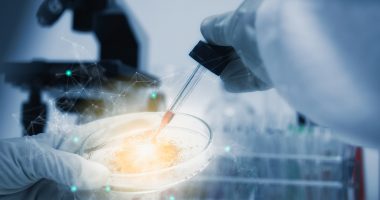Avrobio‘s AVR-RD-03 Gene Therapy Effective in Pompe Mouse Model

AVR-RD-03, Avrobio‘s experimental blood stem cell gene therapy for classic infantile-onset Pompe disease, was found to be safe and effective in a mouse model of the disease.
The findings, presented as a poster at the 2022 annual meeting of the American Society of Gene & Cell Therapy (ASGCT) in Washington, D.C., demonstrated that at eight months post-treatment with AVR-RD-03, toxic glycogen buildup was reduced to healthy levels in several tissues.
The preclinical data support the company’s plans to advance into a clinical trial next year, according to Avrobio.
“We believe there is an urgent need for new treatment options that can address the systemic impact of Pompe disease and our preclinical data suggest that one dose of [blood stem cell gene therapy] can potentially normalize glycogen levels in key tissues and halt or potentially reverse the head-to-toe impact of Pompe disease,” Essra Ridha, MD, Avrobio‘s chief medical officer, said in a press release.
Classic infantile-onset Pompe is a rare, lysosomal disorder caused by an inefficient production, or function, of an enzyme called acid alpha-glucosidase (GAA). This leads to the accumulation of glycogen, a sugar molecule, within the lysosomes (small recycling structures in the cells) in muscles and in the central nervous system — the brain and spinal cord.
Symptoms of classic infantile-onset Pompe disease, which appear shortly after birth, include muscle weakness, delayed motor development, heart problems, and breathing difficulties.
Avrobio‘s AVR-RD-03 uses a Glycosylation-Independent Lysosomal Targeting (GILT) tag licensed from BioMarin to improve the delivery of the GAA gene to lysosomes. The GILT tag is expected to enhance treatment delivery to target tissues.
The investigational therapy is delivered in a modified lentivirus vector, which is then given to blood stem cells. This way, the genetic sequence is incorporated into the stem cell’s DNA. Once the modified stem cells are transplanted into mice, they can differentiate in the bone marrow into blood cells that produce the functional version of the GAA enzyme. These modified cells can ultimately reach all tissues in the body through the blood.
Results from a study with six gene therapy groups in mice showed the stem cell transplant was stable up to eight months after a one-time infusion of AVR-RD-03.
After eight months, significant GAA enzyme activity was measured in the bone marrow, ranging from a median of 300–534 nanomol/h/mg, compared to about 4–6 nmol/h/mg in normal mice.
As previously reported, glycogen accumulation was reduced by more than 99% in the heart and the thickening of the heart muscle was also reversed. Glycogen levels were reduced by more than 95% in the brain, 99% in the spinal cord, 97% in the diaphragm (a dome-shaped muscle that is important for breathing), and 85% in the quadriceps (thigh). Motor function was also significantly improved seven months after treatment.
According to the company, the findings show that the type of vector used to deliver the gene to the blood stem cells is safe. Avrobio also revealed that, in a separate study, researchers were able to efficiently replace the missing gene and produce a working enzyme in human blood stem cells using the modified lentivirus.
“These data show a substantial reduction of substrate in key tissues, muscle and CNS, reduced tissue pathology and correction on a functional level, which are all very relevant for potential future translation into Pompe patients,” Niek P. van Til, PhD, leader of the research and consultant to Avrobio, said.






